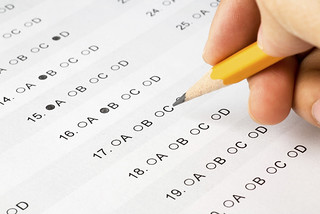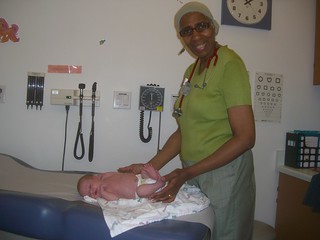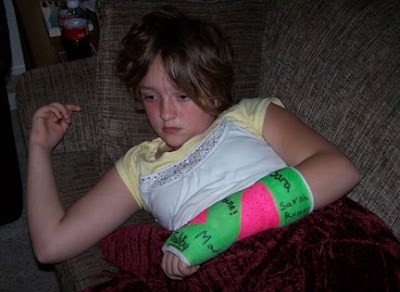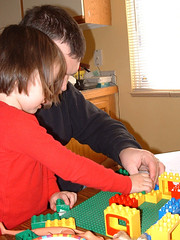Search Results for "medical"
The Medical Field Professionals
Introduction
In this section you will find information about medical professionals and other professionals also trained at a graduate post-secondary level in health and mental health, working with children and families. These professionals may work in hospital settings, as well as in clinics or medical office centres. Some of them may provide home visitation or may be affiliated with child development centres or agencies.
August 27, 2011 No Comments
Mental Health Therapists: Psychotherapists, Psychologists and Social Work Counsellors
There are a number of mental health professionals who offer a variety of services to children, adolescents and adults. The two main types are:
- Psychologists: psychologists are professionals who have a deep understanding of human development, abnormal psychology and therapeutic therapies and practices. They:
- Assess individuals through the use of standardized tests (Fig. 1), checklists, observations and interviews;
- Diagnose mental illness (such as obsessive-compulsive disorder) or a developmental disability (such as autism);
- Offer psychotherapy on an individual or small group basis;
- Refer people to more specialized professionals.
- Psychiatrists: psychiatrists are medical doctors who also have a in professional psychology. They also assess individuals, diagnose them with a mental illness or a developmental disability and offer them psycho-therapy. They are also able to offer prescription drugs to those who need them.

Figure 1. Standardized tests
To learn more about mental health professionals, please visit the birth to six section of this course.
see References
January 30, 2012 No Comments
Physiotherapist
PTs work with individuals who have difficulties with gross motor skills, movement and posture. They also work with individuals whose muscles hurt. Through a variety of exercises, PTs help individuals (Fig. 1):

Figure 1. Physiotherapist helping with exercises
- Improve muscle tone;
- Improve mobility;
- Improve sense of balance;
- Improve range of motion;
- Improve coordination between different muscle groups;
- Improve one’s ability to walk, run, go up and down the stairs and sit;
- Improve one’s ability to move from one position to another (that is, move from sitting to standing);
- Develop motor skills that the child has not yet achieved;
- Learn how to use adaptive equipment such as wheelchairs and walkers.
PTs use a variety of techniques to help children develop the motor skills that they lack. Such techniques include passive techniques (the PT moves the child’s limbs to improve muscle movement) and active techniques (the PT gets the child to move his or her own muscles). PTs may help children improve their muscles through the use of water, in a pool or a bathtub (Fig. 2).

Figure 2. Active technique to develop motor skills
PTs work with a variety of children, including children with Down syndrome, cerebral palsy, spina bifida and traumatic brain injury. They offer these children therapy on an individual basis, or in small groups.
PTs often serve on children’s school-based Individual Education Plan (IEP) (see full Glossary) team. They work very closely with parents, teachers, special educators and other professionals (such as OTs), in order to make the school environment and the classroom as inclusive as possible.
For more information about PTs, please visit the following website.
see References
January 30, 2012 No Comments
Pediatrician
Pediatricians are medical doctors who specialize in treating infants, children and adolescents. They specialize in diseases that mostly affect children (Fig. 1). They also:

Figure 1. Pediatrician
- Treat children who are ill or sick;
- Prescribe medications, such as antibiotics, to children who need them;
- Monitor children’s health by measuring their height, weight and head circumference.
Pediatricians may also engage in preventive medicine and may refer children to specialists such as Ear Nose and Throat (ENTs).
For more information about pediatricians, please visit the following website.
see References
January 30, 2012 No Comments
Orthopaedic Surgeon (“Bones and Muscle” Surgeon)
An orthopedic surgeon is a medical doctor who specializes in the study of human bones and muscles (musculo-skeletal conditions). This specialist examines, diagnoses and treats conditions and diseases of the bones and muscles that are usually the result of congenital anomalies (see full Glossary), trauma, infections and tumors.
Orthopedic surgeons usually examine and treat conditions related to the following body parts:
- Spine;
- Hands and feet;
- Arms and legs (Fig. 1);
- Knees and elbows.

Figure 1. Arm fracture
Orthopedic surgeons usually work with children who have conditions such as cerebral palsy and spina bifida.
In addition to diagnosing and treating bone and muscle disorders and conditions, orthopedic surgeons perform surgical procedures to fix or lessen the impact of certain conditions. They also work closely with physiotherapists and occupational therapists, especially when it comes to use of adaptive equipment such as wheelchairs, walkers or splints (Fig. 2).

Figure 2. Using splints
see References
January 30, 2012 No Comments
Ophthalmologist or Eye Doctor
An ophthalmologist is a medical doctor who specializes in the eye and the areas around the eye (Fig. 1). Such areas include the eyelids and visual pathways. This specialist conducts full eye examinations, diagnoses eye diseases, prescribes medication and offers other treatment options (such as wearing an eye patch) for children and adults with eye diseases. Ophthalmologists also prescribe prescription glasses and contact lenses to their patients.

Figure 1. Eye doctor
Ophthalmologists often work with children who have conditions/disorders that include:
- Down syndrome;
- Blindness or low vision (Fig. 2);
- Deafblindness;
- Cerebral palsy.

Figure 2. A girl wearing glasses
see References
January 30, 2012 No Comments
Sensory Integration Specialist
Sensory integration specialists are occupational therapists with special training in sensory integration therapy. Human beings have five senses (Fig. 1) (seeing, hearing, smelling, touching and tasting) and two additional movement senses (the vestibular system (see ECI Glossary) and the proprioceptive system (see ECI Glossary)). Sensory integration involves these 7 senses working well with one another.

Figure 1. Five senses
When a child’s sensory system does not work well he or she child may need the help of a sensory integration specialist.
Sensory integration specialists work with different groups of children, including:
- Children with autism;
- Children with fragile X syndrome;
- Children with fetal alcohol spectrum disorder;
- Children with cerebral palsy;
- Children who are deafblind;
- Children who have sensory processing difficulties (see full Glossary).
Sensory integration specialists offer children therapy individually or in small groups. They work very closely with parents and teach them basic sensory integration techniques. They may also help children and their parents use adaptive equipment, such as balance balls.
Sensory integration specialists often serve on Individual Education Plan (IEP) (see full Glossary) teams and offer teachers advice on how to make their classrooms less overwhelming to children who are hypersensitive (see full Glossary), or more sensory stimulating children who are hyposensitive (see full Glossary).
see References
January 29, 2012 No Comments
Occupational Therapist
Occupational therapists or OTs work with children who have difficulties with their muscles. OTs help children improve the muscles that will make it possible for them to be as independent as possible. OTs work on helping children to improve their fine motor skills, and therefore their quality of life. Specifically, OTs help children with:
- Eye/hand coordination (Fig. 1);
- Eating (with one’s hands or with utensils such as forks and chopsticks);
- Drinking and swallowing;
- Dressing and undressing;
- Writing, drawing and painting (Fig. 2);
- Bathing and grooming;
- Toileting.

Figure 1. Eye/hand coordination

Figure 2. A boy painting
OTs work with children who have motor impairments (such as cerebral palsy and spina bifida), muscle tone (see ECI Glossary) difficulties (such as Down syndrome and FASD), and trouble with muscle coordination.
OTs work with children individually or in groups. They offer therapy sessions to individual children, and often act as consultants in school settings.
OTs work very closely with the children’s parents and make suggestions about how parents can make adaptations to their homes to maximize their children’s independence.
OTs are usually an integral part of many Individual Education Plan (IEP) (see full Glossary) teams. They serve on the team, offer information about whatever condition the child has, make recommendations to teachers and parents, and offer advice and suggestions about adaptive equipment. Such adaptive equipment includes adaptive pens and pencils, scissors, rulers and paint brushes.
OTs with special training in sensory integration therapy are called sensory integration specialists. They work with children who have sensory processing difficulties.
For more information (and an informational video) about OT, please visit the following website.
see References
January 29, 2012 No Comments
Nurse
Nurses are members of the medical team and have medical degree. They are often described as doctors’ “right hand” helpers (Fig. 1). They work in hospitals, clinics, and in Canada, public health agencies. Nurses:
Figure 1. “Right hand” helpers
- Visit families of newborn babies in order to make sure the baby is doing well;
- Offer immunization or vaccination services to infants, toddlers and children;
- Perform day to day operations in hospital settings, such as administering medication and taking vital signs;
- Run the health or nurse’s station in schools.
Nurses often serve on the Individual Education Plan (IEP) (see full Glossary) teams of children with medical conditions or conditions that require the child to be on medication. In school settings, they offer:
- Information about medical conditions such as epilepsy, asthma and cancer;
- Information about the medication that a child may be taking and its side effects;
- Information about medication that a child with a mental health condition, such as anxiety disorders, may be taking and its side effects;
- Information about what to do in crisis situations related to medical conditions. For example, nurses will have a plan for what to do if a child with epilepsy has a tonic-clonic seizure on school grounds.
Information about medication children may be taking is very important. Some medications have serious side effects that include drowsiness, nausea and upset stomach. Information about these side effects will help teachers and special educators make plans regarding the timing of tests and field trips.
For information about the different types of nurses available, please visit the birth to six section of this course.
see References
January 29, 2012 No Comments
Neurologist
A neurologist is a medical doctor who specializes in the human neurological system which includes (Fig. 1):
Figure 1. Neurologist
- The central nervous system (that is, the brain and the spinal cord);
- The peripheral nervous system (see full Glossary);
- The muscles;
- The autonomic nervous system.
Neurologists work with other specialists to diagnose and treat medical conditions that are neurologically-based. Such conditions include cerebral palsy, epilepsy and Fetal Alcohol Spectrum Disorder.
When neurologists first see patients, they usually conduct a complete physical examination paying special attention to how the person’s nerves are working. Part of a neurological exam also includes looking at cognitive functions (such as memory and concentration) because difficulties with these functions could indicate a neurological impairment. Neurologists also perform complex machine-based tests to measure the neurological skills of an individual. Such tests include the electroencephalography (EEG) test (see full Glossary), the Magnetic Resonance Imaging (MRI) test (see full Glossary), the Computed Axial Tomography (CAT) (see full Glossary) scan and the Positron Emission Tomography (PET) scan (see full Glossary).
see References
January 29, 2012 1 Comment